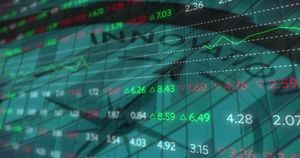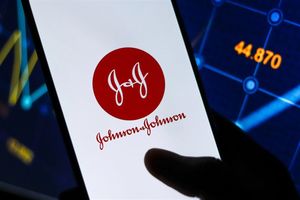Financial News
Argentina's Mining Boom: A Record-Breaking Year in 2025 Driven by Lithium, Gold, and Silver

Argentina's mining sector is currently experiencing an unprecedented surge in 2025, with exports reaching historic highs and injecting a much-needed boost into the national economy. This remarkable performance is largely propelled by the robust production and export of key minerals, namely lithium, gold, and silver. The influx of foreign currency, increased government revenues, and job creation are immediate implications of this mining boom, positioning the sector as a vital pillar for the nation's economic recovery and diversification.
For the first nine months of 2025, Argentina's mining exports have already totaled a staggering $4.21 billion, marking a significant 32.9% increase compared to the same period in 2024. Industry projections are optimistic, with forecasts suggesting that total mining exports for the entire year could reach between $5 billion and $5.2 billion, setting a new historical benchmark for the country. This impressive growth highlights the increasing global demand for these strategic minerals and Argentina's growing capacity to meet it.
Unpacking the Surge: Details, Timeline, and Key Players
The record-breaking performance in Argentina's mining sector in 2025 is a culmination of several factors, including sustained investment, favorable global commodity prices, and strategic policy initiatives. Gold continues to be the bedrock of Argentina's mining exports, consistently accounting for approximately 70-80% of the total value. Its strong showing in 2025 is primarily due to elevated international prices, which have soared above $4,100, reflecting heightened global economic anxieties and demand for safe-haven assets. While a slight decrease in the volume of gold output is projected due to the maturation of some mining projects, the price surge has more than compensated for this.
Lithium, often dubbed the "white gold," has rapidly emerged as a critical growth engine. Argentina, holding the world's second-largest lithium reserves and currently the fifth-largest producer, is projected to see a 54% rise in production and a 43% increase in exports in 2025. This expansion is driven by seven operational projects, attracting substantial foreign investment. However, this growth occurs amidst a global oversupply and rising domestic costs, which have led to a drop in lithium prices, potentially keeping the overall value of lithium exports at levels similar to 2024 despite volume growth. Silver also plays a significant role, contributing 12-14% of total mining exports, with its strong performance also linked to "outstanding" international prices, estimated to contribute around $1.5 billion annually to the economy.
The timeline leading up to this moment has seen consistent efforts to attract mining investment. Over the past decade, Argentina has gradually opened its doors to foreign capital in the mining sector, with a renewed push under the current administration to streamline regulations and offer incentives. Key players in this boom include major international mining corporations that have invested heavily in the country's lithium, gold, and silver projects, alongside domestic companies. Initial market reactions have been largely positive, with investor confidence in the sector growing, although some caution remains due to political uncertainties ahead of the October 26, 2025, midterm elections and global commodity price volatility. The government's introduction of the Large Investment Incentive Regime (RIGI), offering tax, customs, and exchange rate benefits for investments exceeding $200 million, is a significant policy move aimed at further accelerating development.
Corporate Fortunes: Winners and Losers in the Mining Boom
The unprecedented surge in Argentina's mining exports is creating significant opportunities for a range of public companies, while also presenting challenges for others. Companies with established operations in lithium, gold, and silver are poised to be the primary beneficiaries.
In the lithium sector, companies like Lithium Americas Corp. (NYSE: LAC) and Allkem Limited (ASX: AKE) (which recently merged with Livent to form Arcadium Lithium (NYSE: ALTM)) are key players with significant projects in Argentina's "lithium triangle." These companies stand to gain from increased production volumes, even if lithium prices have seen some softening due to global oversupply. Their operational efficiency and ability to scale production will be crucial. Other companies with interests in the region, such as Ganfeng Lithium Group Co., Ltd. (SZSE: 002460) through its various partnerships, are also well-positioned. The increased export volumes will translate into higher revenues, potentially boosting their stock performance and allowing for further investment in exploration and expansion.
For gold and silver, major producers like Barrick Gold Corporation (NYSE: GOLD), through its Veladero mine, and Yamana Gold Inc. (TSX: YRI) (now part of Pan American Silver (NASDAQ: PAAS)) have long-standing presences in Argentina. The elevated international prices for both precious metals mean higher profit margins for these companies, even with stable or slightly decreasing production volumes from mature mines. Junior mining companies focused on exploration and development in promising regions of Argentina could also see increased investor interest and potential for future growth. However, companies facing higher operational costs or those with less efficient mining techniques might find their margins squeezed despite the favorable pricing environment, particularly if they are unable to leverage the new incentive regimes effectively. Furthermore, companies heavily reliant on older, less productive mines might struggle to keep pace with the overall sector growth.
Broader Significance and Industry Ripple Effects
Argentina's record-breaking mining exports in 2025 represent a pivotal moment that extends beyond mere economic figures, fitting into broader industry trends and carrying significant ripple effects. Globally, there is an escalating demand for critical minerals, particularly lithium, driven by the accelerating transition to electric vehicles (EVs) and renewable energy storage solutions. Argentina's emergence as a major lithium supplier directly addresses this global need, positioning the country as a crucial player in the future of green technology. Similarly, gold and silver continue to serve as vital safe-haven assets and industrial components, with their sustained high prices reflecting ongoing geopolitical and economic uncertainties worldwide.
The ripple effects of this boom are substantial. For competitors in the global mining market, particularly other South American nations in the "lithium triangle" like Chile and Bolivia, Argentina's aggressive expansion and attractive investment incentives could intensify competition for foreign capital and market share. Partners, including global automotive manufacturers and electronics companies, will benefit from a more diversified and potentially more stable supply chain for essential raw materials. However, they will also need to navigate the complexities of Argentine politics and potential supply disruptions. Regulatory and policy implications are also significant; the success of the Large Investment Incentive Regime (RIGI) could serve as a model for other developing nations seeking to attract large-scale industrial investments, while also drawing scrutiny regarding environmental and social governance standards.
Historically, mining booms have often been double-edged swords for resource-rich nations. Comparisons can be drawn to past commodity supercycles in South America, such as the copper boom in Chile or the iron ore boom in Brazil. While these periods brought immense wealth, they also presented challenges related to resource nationalism, environmental concerns, and the need for sustainable economic diversification beyond raw material extraction. Argentina's current situation underscores the importance of robust regulatory frameworks, transparent governance, and strategic planning to ensure that the benefits of this mining surge are widely distributed and contribute to long-term national development, rather than merely creating a temporary windfall.
What Comes Next: Navigating the Future of Argentina's Mining Sector
Looking ahead, Argentina's record-breaking mining exports in 2025 set the stage for both short-term opportunities and long-term strategic considerations. In the short term, the continued influx of foreign currency from mining exports will be crucial for stabilizing Argentina's macroeconomic environment, bolstering its foreign reserves, and potentially easing inflationary pressures. The government will likely focus on maintaining the momentum of the Large Investment Incentive Regime (RIGI) to attract even more capital, particularly into exploration and the development of new projects across the lithium, gold, and silver sectors. We can expect increased activity in infrastructure development to support mining operations, including improvements in logistics and energy supply.
For the long term, Argentina faces critical decisions regarding how to leverage this mining boom for sustainable economic growth. One potential strategic pivot involves moving beyond raw material extraction towards value-added processing. For instance, instead of solely exporting raw lithium carbonate, Argentina could explore opportunities to establish domestic facilities for producing lithium hydroxide or even battery components, thereby capturing a larger share of the value chain. This would require significant investment in technology, skilled labor, and industrial infrastructure. Market opportunities will continue to emerge in related sectors, such as mining technology, environmental services, and specialized logistics. However, challenges persist, including the need to address political uncertainties, ensure policy stability, and navigate global commodity price fluctuations, particularly the volatile lithium market.
Potential scenarios range from a sustained, diversified mining-led growth trajectory, where the sector acts as a catalyst for broader industrial development, to a more cautious path where growth is tempered by global economic headwinds and domestic policy inconsistencies. A key outcome to watch will be the success of the RIGI and whether it can truly de-risk large-scale investments in the eyes of international capital. Furthermore, the country's ability to balance economic development with environmental protection, especially concerning water usage and indigenous community rights, will be paramount. Investors should monitor legislative developments, provincial government policies, and global demand trends for these critical minerals to gauge future prospects.
A Golden Era for Argentina's Mining: A Comprehensive Wrap-up
Argentina's mining sector is undeniably in the midst of a golden era in 2025, marked by record-breaking exports of lithium, gold, and silver that are significantly bolstering the national economy. The key takeaways from this event are clear: mining has emerged as a critical driver of foreign currency generation, job creation, and economic diversification for Argentina. The strong performance of gold, fueled by high global prices, continues to provide a stable foundation, while the explosive growth of lithium production positions Argentina as a pivotal player in the global energy transition. Silver also contributes substantially, benefiting from robust international demand.
Moving forward, the market outlook for Argentina's mining sector remains largely positive, albeit with inherent complexities. The government's proactive stance, exemplified by the Large Investment Incentive Regime, signals a commitment to fostering a favorable environment for investment. However, sustained success will hinge on navigating political stability, ensuring consistent regulatory frameworks, and addressing infrastructure needs. The global demand for critical minerals, particularly lithium, is projected to remain strong for the foreseeable future, providing a tailwind for Argentine exports.
Final thoughts on the significance and lasting impact suggest that this mining boom could fundamentally reshape Argentina's economic landscape, reducing its reliance on traditional agricultural exports and providing a pathway to greater industrialization. For investors, the coming months will be crucial for observing several key indicators: the effective implementation and stability of investment incentives, the outcome of midterm elections and their impact on policy, and global trends in commodity prices, especially for lithium. Furthermore, the industry's commitment to sustainable practices and community engagement will be vital for long-term social license and operational success. This period represents a unique opportunity for Argentina to solidify its position as a major global supplier of essential minerals, but realizing its full potential will require strategic foresight and consistent execution.
This content is intended for informational purposes only and is not financial advice
More News
View More




Quotes delayed at least 20 minutes.
By accessing this page, you agree to the following
Privacy Policy and Terms Of Service.




